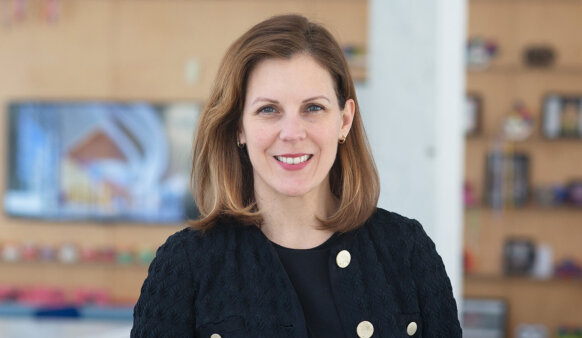These days, in contemporary lab design, the intersection of facilities for science, data, and health has a name: convergence. It’s not really a trend, it’s more of an evolution towards better design. But it also represents a revolution toward the creation of new areas of inquiry and maybe even new disciplines.
Like others at our firm, I’m eager to know how convergence can influence what we envision. So as part of our annual symposium series, I and several leaders from the Boston office invited experts and clients from across the fields of science, technology, and biotech for a closer look. Designers came from all over the global family of Perkins&Will to a space at MIT.
What I learned here deepens my belief that our current definition of laboratory spaces is now fully ready for revision. I’m excited to see our work embrace a convergent philosophy.
A few of my notes from the conference:
- As a practice, we are looking beyond the walls of the lab to define the spaces where discoveries and connections are made. Our lab buildings will serve many functions over time. So our buildings need to support the unity of technologies and professionals with very different skill sets and research needs.
- It’s apparent that most of the evolutionary and even revolutionary thinking is happening in small and medium sized biotech firms, organizations that are not usually characterized by an adversity to risk. Our university, government and not for profit research clients are lagging behind, and seemingly at risk of losing research funding, core personnel, and momentum. It’s a compelling, if challenging, dynamic. It’s also an fascinating opportunity to mix these two client types.
- We had two client presentation which really challenged and expanded our notions of a research facility.
- Ed Dondero, the director of real estate and planning for Biogen, explained why his company is constantly refining, evolving and rearranging lab/office and communal spaces to quantifiably improve research efforts and outcomes. In other words, when your work requires convergence and collaboration, the space where you work can very concretely determine how effective you are. He introduced us to a new term “coffeeable” as a design driver. Scientists, like all humans, need space where they can sit down to enjoy coffee or an entire meal, or to just clear their mind for a while. Lab spaces don’t necessarily have that. Plus, with the shift toward automated experiments, scientists spend less time in lab spaces. They need new spaces to accommodate that change.
- Murray Robinson, the founder of Molquant, challenged all our beliefs on what is required to design successful research spaces. He explained how new trends in genetic and genomic research can focus on data-mining, computational analysis and even “crowd sourcing” to reduce enormous data-sets down to realistic targets.
This is the fourth year we’ve had a symposium that brings together clients, experts, and designers. Previous installments have focused on new educational models for medicine and engineering, neuroscience research, and most recently, innovation centers.
And we’re already planning our next round, in June 2018. We’ve got a great slate of speakers coming to Chicago to focus on the process of innovation, that is, of converting ideas into value. What sustains the best ideas at today’s most innovative companies? We’ll dig deep and look for ways to apply those practices to our research environments.
When we started these symposia, we didn’t expect them to turn convergent in their own right. One year, we met at Wright State University, at a new neuroscience research facility designed by Perkins&Will. One of the speakers was a senior scientist for another one of our buildings, the Allen Institute for Brain Science. At the seminar and the dinner that followed, he made a critical connection with a senior researcher from Wright State and its associated medical school. The two institutions continue to collaborate on meaningful research today. That’s a great feeling.
At top: In Seattle, Washington, the Allen Institute for Brain Science, winner of High Honors in the 2017 Laboratory of the Year Award by R&D Magazine. Watch full-length videos from Perkins&Will’s Convergence Symposium here.
